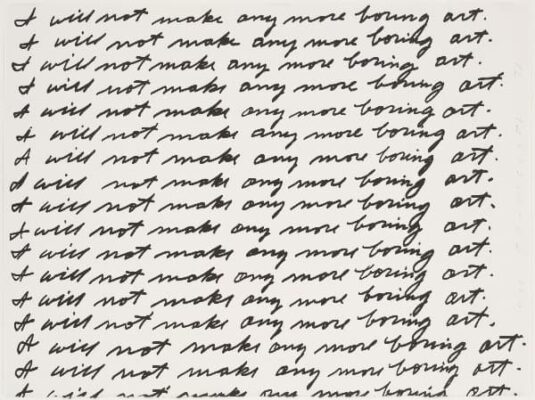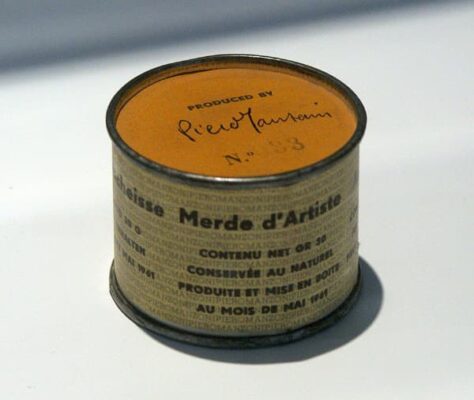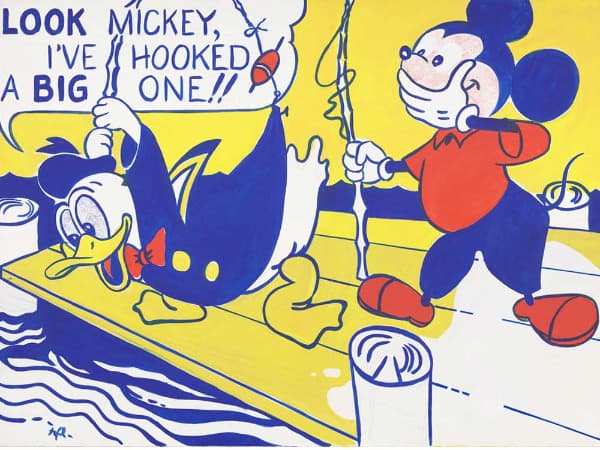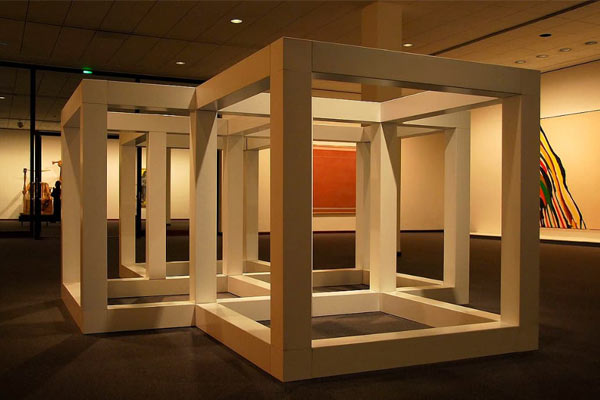Conceptual Art
From matter to idea
In conceptual art the idea or the concept is the most important aspect of the work. When an artist uses a conceptual form of art, it means that all of the planning and decisions are made beforehand and the execution is a perfunctory affair. The idea becomes a machine that makes the art.
Sol LeWitt
John Baldessari: “I Will Not Make Any More Boring Art”, 1971. Nueva York, MoMA. ©John Baldessari / ARS New York ·· Piero Manzoni – Merda D’artista, 1961. Private collection
The greatest of Marcel Duchamp‘s contributions to art, his readymades, challenged the very intuitive idea that what are usually called works of visual art should be elements “at the service of the eye”. For Duchamp, art was to be “at the service of the mind,” with the viewer’s interpretation being the fundamental element of the work of art, beyond its appearance, its beauty or its ordinality. Thus, a urinal or a bicycle wheel, by including in a visible part the signature of the artist, immediately came to be interpreted by the viewer as a work of art. “Let us consider two important factors, the two poles of the creation of art,” Duchamp expounded at a lecture in 1957, “the artist on one hand, and on the other the spectator who later becomes the posterity.”
Duchamp thus outlined the fundamental idea of Conceptual Art: that the idea, the concept associated with a work of art is more important than the work of art itself, its material or aesthetic value. On this theoretical basis, the practical manifestations were, as it is easy to suppose, very varied. For example, Robert Rauschenberg (1925-2008), also considered one of the pioneers of Pop Art, presented in 1953 a work with the explanatory title “Erased Kooning Drawing,” and in 1961, with Conceptual Art at its height, he sent to a portrait exhibition a telegram with the text “This is a portrait of Iris Clert if I say so.” In this sense, it should be noted that Conceptual artists accept that there is no better medium to convey ideas than writing, and this is incorporated into their works, sometimes being the entirety of the work, as for example, “I Will Not Make Any More Boring Art“, 1971, by John Baldessari (1931-2020). The same year in which Rauschenberg sent his “portrait-telegram“, Piero Manzoni (1933-1963) created one of the most famous and controversial works of conceptual art, his “Artist’s Shit“, a series of cans containing -allegedly- the feces of the artist himself.
Like many of the avant-gardes of the first half of the twentieth century, Conceptual Art, at least understanding it in its most “purist” definition, had a fairly short duration but an exceptional influence that continues to this day. “The moment of conceptual art was relatively short-lived, barely spanning a full decade. And yet its legacy is wide-ranging, covering a vast terrain in terms of its effect on traditional modes and categories of artistic production, exhibition, and distribution”. (Alexander Alberro, Blake Stimson: “Conceptual Art: A Critical Anthology”, 1999)
In the 1980s and 1990s the ideas of Conceptual Art continued with the sometimes called Neo-conceptual Art, represented by a heterodox group of unrelated artists (with exceptions such as the Moscow Conceptualists), among them Tracey Emin (b.1963), the enfant terrible of the Young British Artists, the Scotsman Douglas Gordon (b.1966) and the Englishman Martin Creed (b.1968).
G. Fernández · theartwolf.com
Follow us on:




